Choosing the right fishing rod size is crucial for optimal performance and enjoyment. This guide helps anglers understand rod length, materials, and action to make informed decisions for their fishing adventures.
Importance of Choosing the Right Fishing Rod Size
Choosing the right fishing rod size is essential for maximizing casting performance, fighting fish, and overall enjoyment. The correct rod length ensures accuracy, leverage, and comfort, making it easier to handle fish effectively. A well-suited rod size enhances sensitivity, allowing anglers to detect bites and respond quickly. It also improves casting distance and precision, which are critical for targeting specific species. Additionally, the right size reduces fatigue during long fishing sessions, ensuring a more pleasant experience. Whether fishing in tight spaces or open waters, selecting the appropriate rod size is vital for success and satisfaction. It directly impacts how anglers interact with their environment and the fish they pursue, making it a foundational aspect of effective fishing.
Overview of Fishing Rod Length and Its Impact on Performance
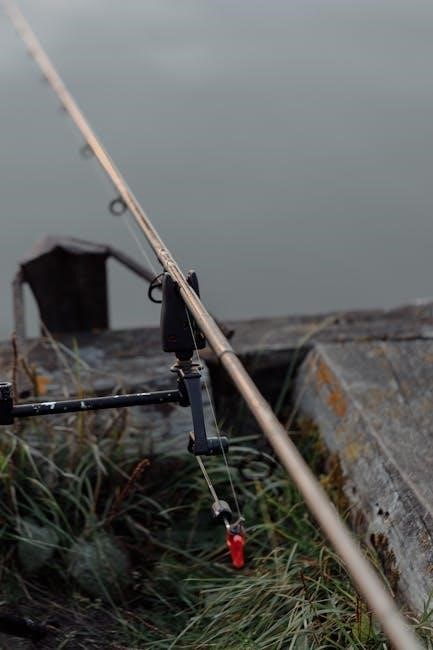
Fishing rod length significantly influences casting distance, accuracy, and overall performance. Longer rods, typically ranging from 9 to 14 feet, excel in open waters, providing greater leverage and casting range. They are ideal for saltwater fishing and targeting larger species. Shorter rods, between 2 to 6 feet, are better suited for tight spaces, such as ice fishing or trolling, offering precise control and easier handling. The length of the rod also affects its sensitivity and ability to detect bites. A longer rod may sacrifice some sensitivity but offers more power, while a shorter rod provides quicker hooksets and better maneuverability. Balancing these factors ensures optimal performance for specific fishing conditions and target species, making rod length a critical factor in angling success.
Fishing Rod Length Guide
Fishing rod lengths range from 2ft to 14ft, with each length suited for specific fishing environments and target species. Longer rods enhance casting distance, while shorter rods improve control.
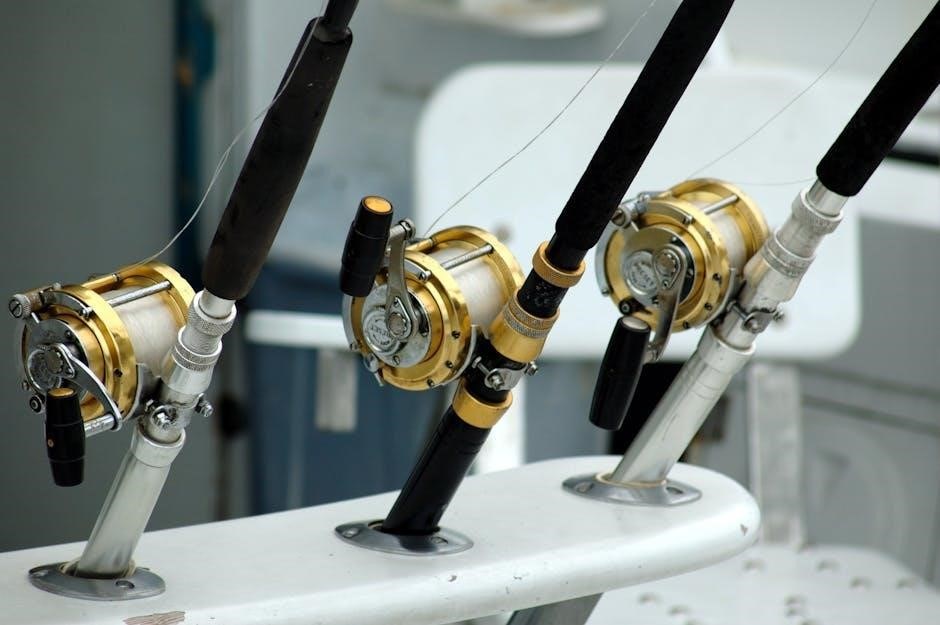
Understanding Rod Length Ranges (2ft to 14ft)
Fishing rods vary in length from 2ft to 14ft, catering to diverse fishing styles and environments. Shorter rods (2-5ft) are ideal for tight spaces like ice fishing or small streams, offering precise control. Medium-length rods (6-8ft) are versatile, suitable for most freshwater and light saltwater fishing. Longer rods (9-12ft) excel in open waters, providing greater casting distance and leverage for larger fish. Extended rods (13-14ft) are specialized for surf fishing or heavy-duty applications. Each length impacts casting accuracy, leverage, and comfort, making it essential to match the rod size to the fishing scenario and target species for optimal performance;
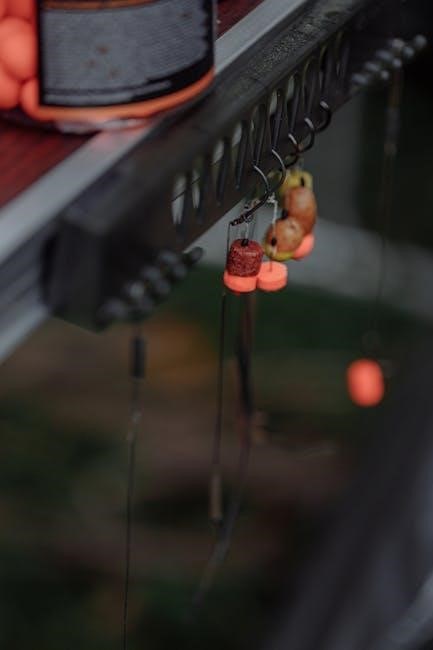
Pros and Cons of Short vs. Long Fishing Rods
Short fishing rods (2-5ft) offer precise control and are ideal for tight spaces like ice fishing or small streams; They are lightweight and easy to maneuver, making them great for beginners or targeting small species. However, they lack casting distance and leverage for larger fish. Long rods (9-14ft) provide exceptional casting range and leverage, making them perfect for surf fishing or battling large species. They also absorb more fight from fish, reducing strain on the angler. However, long rods can be cumbersome in tight spaces and may be less accurate for precise casting. Choosing between short and long rods depends on the fishing environment, target species, and personal preference for control versus reach.
How Rod Length Affects Casting Distance and Accuracy
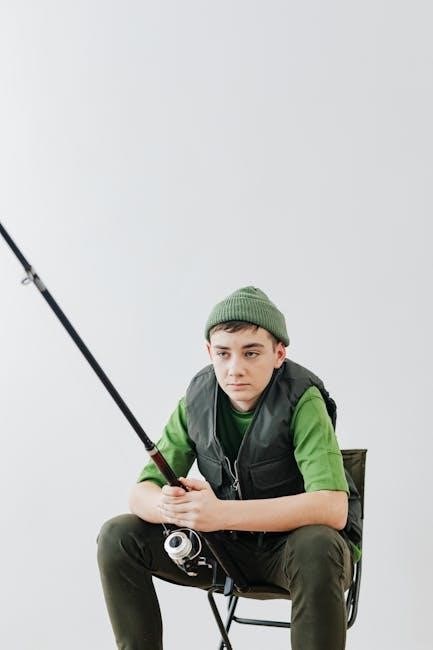
Rod length significantly impacts casting distance and accuracy. Longer rods (9-14ft) generate more leverage, enabling farther casts and better hook-setting power, especially for larger species. However, they can be less precise in tight spaces. Shorter rods (2-5ft) offer greater control and accuracy, making them ideal for small, precise casts in confined areas. Medium-length rods (6-8ft) strike a balance, providing decent casting range while maintaining manageable accuracy. The choice depends on the fishing environment and target species. Longer rods excel in open waters for distance, while shorter rods are better for tight spaces and small fish. Balancing rod length with casting technique ensures optimal performance for any fishing scenario.
Best Rod Lengths for Specific Fishing Environments
The ideal rod length varies depending on the fishing environment. For freshwater fishing, shorter rods (5-7ft) are perfect for small streams and precise casting, while medium-length rods (7-9ft) work well for larger rivers and lakes. Saltwater fishing often requires longer rods (9-14ft) to handle larger species and stronger currents. Ice fishing uses ultra-short rods (2-3ft) for tight spaces and quick hook-sets. Surf fishing benefits from long rods (10-14ft) for maximum casting distance. In tight spaces like ponds or docks, shorter rods (5-6ft) provide better control. Matching rod length to the environment ensures better performance, comfort, and success in landing your target species.
Fishing Rod Action and Power
Fishing rod action and power determine its performance. Action refers to the rod’s flex, while power indicates its strength. Both factors are crucial for effective fishing.
What is Rod Action? (Fast, Medium, Slow)
Rod action describes how much a fishing rod flexes when pressure is applied. A fast action rod bends only near the tip, offering quick hook-setting power and sensitivity. Medium action rods flex in the upper half, providing a balance between strength and flexibility. Slow action rods bend throughout their length, ideal for lighter lines and smaller fish. Action affects casting accuracy, fighting ability, and overall fishing experience. Choosing the right action depends on the target species, fishing technique, and personal preference. Understanding rod action helps anglers select the best tool for their specific fishing needs and environments.
Understanding Rod Power (Light, Medium, Heavy)
Rod power refers to a rod’s strength and ability to handle different fishing lines and fish sizes. Light power rods are designed for small fish and light lines, offering high sensitivity but less strength. Medium power rods are versatile, suitable for a wide range of fishing conditions and species, balancing strength and flexibility. Heavy power rods are built for large fish and heavy lines, providing maximum strength and durability. Choosing the right power ensures the rod can handle the target species and fishing conditions effectively. It also impacts sensitivity, with lighter rods detecting smaller bites and heavier rods managing powerful fish. Matching rod power to your fishing needs is essential for a successful and enjoyable experience on the water.
Matching Rod Action and Power to Target Species
Matching rod action and power to target species is critical for effective fishing. Fast action rods are ideal for larger, stronger fish like bass or marlin, as they provide quick hook-setting power. Medium action rods are versatile, suitable for species like trout or walleye, offering a balance of sensitivity and strength. Slow action rods are best for small fish like panfish, delivering gentle hook-sets and maximum feel. Heavy power rods are designed for large game fish, while light power rods excel with smaller species. Pairing the right action and power ensures optimal performance, allowing anglers to handle their target species effectively. This tailored approach enhances both casting accuracy and fight control, making it essential for a successful fishing experience.

Fishing Rod Materials
Fishing rods are made from graphite, fiberglass, or composite materials. Graphite rods are lightweight and sensitive, ideal for detecting bites. Fiberglass rods are durable and flexible, suitable for heavy use. Composite rods combine both materials for balanced performance, offering strength and sensitivity. Each material caters to specific fishing needs, ensuring optimal results for anglers.
Graphite vs. Fiberglass vs. Composite Rods
Fishing rods are crafted from graphite, fiberglass, or composite materials, each offering unique benefits. Graphite rods are lightweight and highly sensitive, ideal for detecting subtle bites, making them perfect for precision and finesse fishing. Fiberglass rods are durable and flexible, often used in heavy-duty applications like saltwater or trolling, where strength is crucial. Composite rods blend graphite and fiberglass, providing a balance of sensitivity and durability. This combination makes them versatile for various fishing conditions. The choice of material depends on the angler’s preferences, fishing environment, and target species. Understanding these differences helps anglers select the best rod for their specific needs, ensuring a more enjoyable and successful fishing experience.
How Material Affects Rod Sensitivity and Durability
The material of a fishing rod significantly impacts its sensitivity and durability. Graphite rods are highly sensitive, allowing anglers to detect even the lightest bites, but they can be more brittle and prone to damage. Fiberglass rods are durable and resistant to wear, making them ideal for rough handling, though they may lack the sensitivity of graphite. Composite rods, blending both materials, offer a balance of sensitivity and strength. The choice of material affects how well an angler can feel fish behavior and how the rod withstands harsh conditions. Understanding these trade-offs helps anglers select a rod that meets their fishing style and environment, ensuring both performance and longevity.

Fishing Rod Size by Target Species
Target species influence rod size, as larger fish like marlin require longer, heavier rods, while smaller species like trout need shorter, lighter options for precise control.
Choosing the Right Rod Size for Freshwater Fishing
Freshwater fishing requires rods tailored to specific environments and species. For small ponds or tight spaces, shorter rods (5-6 feet) are ideal, offering precise control and ease of maneuverability. Medium-length rods (6-7 feet) are versatile and suitable for most freshwater species like trout, bass, and walleye, providing a balance between casting distance and accuracy. Longer rods (7-9 feet) are better for larger species in open waters, such as pike or muskie, allowing for greater leverage and casting range. Consider the target species, fishing technique, and water conditions to select the optimal rod size, ensuring a more enjoyable and successful fishing experience.
Choosing the Right Rod Size for Saltwater Fishing
Saltwater fishing often demands longer rods to handle larger species and stronger currents. For inshore fishing, rods between 7-9 feet are ideal, providing sufficient leverage and casting distance. Surf fishing typically requires even longer rods (9-14 feet) to reach distant targets in open waters. Deep-sea fishing may use shorter, sturdier rods (6-8 feet) for battling large game fish like marlin or tuna. The rod size should match the target species, fishing technique, and water conditions. Longer rods enhance casting range and fighting power, while shorter rods offer better control in tight spaces. Selecting the right size ensures a balanced and effective fishing experience in saltwater environments.
Specialized Rods for Specific Fish (e.g., Trout, Bass, Marlin)
Choosing a rod tailored to your target species ensures optimal performance. For trout, a 9-foot, 5-weight rod is ideal, offering precision and sensitivity in freshwater environments. Bass fishing often requires shorter rods (6-7 feet) with medium to heavy power, allowing for strong hook sets and control. Marlin and other large game fish demand heavy-duty rods (7-8 feet), designed for strength and durability to handle intense battles. Each species requires a specific rod size and action to match its fighting style and habitat. Selecting the right specialized rod enhances your ability to land your target species effectively, making every fishing trip more successful and enjoyable.
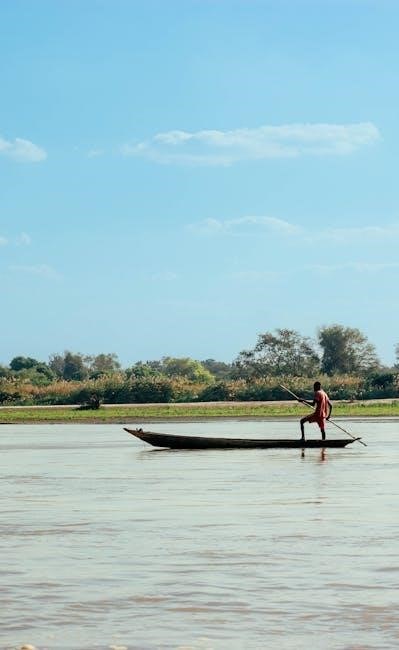
Fishing Rod Size and Angler Skill Level
Fishing rod size should align with an angler’s skill level. Beginners benefit from shorter, more manageable rods, while experienced anglers can handle longer rods for greater casting distance and control.
Best Rod Sizes for Beginners
For beginners, shorter rods (5-7 feet) are ideal as they are easier to handle and maneuver, especially in tight spaces. A medium-light to medium power rod provides the perfect balance between strength and sensitivity, making it easier to detect bites and manage smaller fish. This size range is versatile, suitable for both freshwater and light saltwater fishing. It allows new anglers to practice casting and hook-setting without feeling overwhelmed. Comfort and control are key, as they help build confidence and improve technique. Starting with the right rod size ensures a more enjoyable and rewarding fishing experience, laying a solid foundation for future adventures on the water.
Best Rod Sizes for Intermediate to Advanced Anglers
Intermediate to advanced anglers often prefer rods that offer precision and control, typically ranging from 7 to 9 feet in length. These rods provide the perfect balance of sensitivity and strength, allowing for accurate casting and effective hook-setting. For larger species or long-distance casting, longer rods (9-12 feet) are ideal, especially in saltwater or surf fishing scenarios. Experienced anglers may also opt for fast or extra-fast action rods, which deliver quick tip response and superior durability. Graphite rods are popular for their sensitivity and lightweight design, making them suitable for targeting both medium and large fish. Ultimately, the best rod size depends on the target species, fishing environment, and personal preference, ensuring a tailored experience for skilled anglers.
Additional Considerations
Comfort and ergonomics play a significant role in rod selection, ensuring long fishing sessions remain enjoyable. Testing a rod before purchase is highly recommended to gauge feel and balance.
Comfort and Ergonomics in Rod Size Selection
Comfort and ergonomics are vital when selecting a fishing rod. A well-fitted rod ensures reduced fatigue during long fishing sessions. Handle length and material should suit your hand size, providing a secure grip. Lighter rods with balanced designs minimize strain, allowing for extended use without discomfort. Ergonomic features like cushioned grips enhance control and reduce slipping. Testing a rod’s feel before purchase is crucial, as it directly impacts your fishing experience. A rod that aligns with your body mechanics and personal preference will elevate your performance and overall enjoyment on the water.
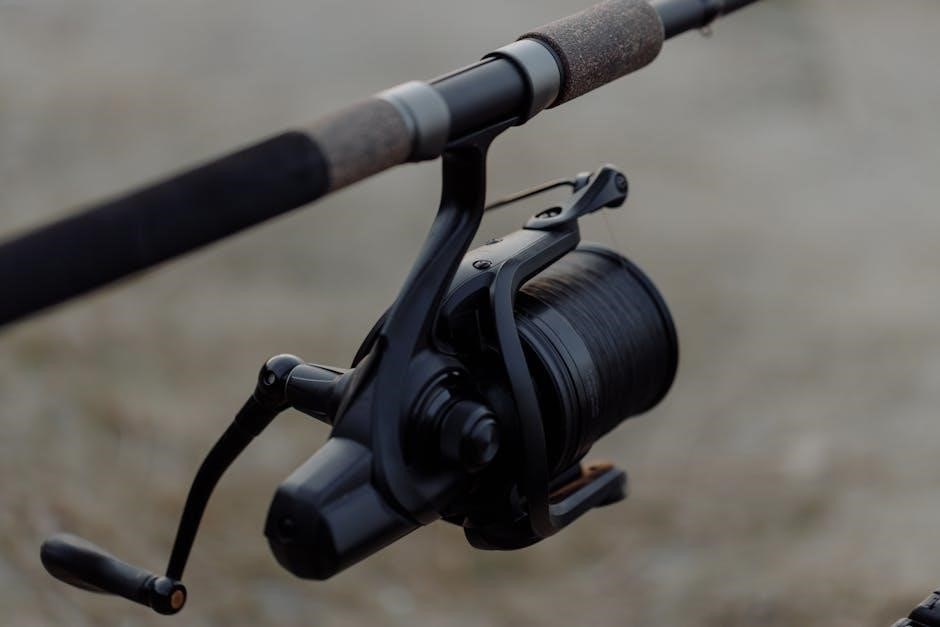
How to Test and Feel a Rod Before Purchase
Testing a fishing rod before purchase ensures it meets your needs. Hold the rod to assess its balance and weight distribution. Check the grip comfort and handle length, ensuring it fits your hand securely. Flex the rod gently to gauge its sensitivity and responsiveness. Pay attention to how it recovers after bending, as this indicates durability. If possible, simulate casting motions to feel the rod’s action and power. Consider the overall ergonomics and how it aligns with your fishing style. Spending time with the rod in hand helps you make an informed decision, ensuring a comfortable and effective fishing experience.

Final Thoughts
Selecting the right fishing rod size enhances your fishing experience, ensuring comfort, performance, and success. Match your rod to your style and target species for lasting enjoyment and memorable adventures.
Key Takeaways for Selecting the Perfect Fishing Rod Size
When choosing a fishing rod, prioritize your fishing environment and target species. Rod length impacts casting distance and accuracy, with shorter rods ideal for precision and longer rods for distance. Consider your skill level, as shorter rods are easier for beginners, while longer rods suit experienced anglers. Material and action also play crucial roles, affecting sensitivity and durability. Test a rod before purchase to ensure comfort and ergonomics. Ultimately, the right rod size balances performance, comfort, and your fishing style, ensuring a more enjoyable and successful experience on the water.
Finding the perfect fishing rod size is a cornerstone of a successful and enjoyable fishing experience. By considering factors like environment, target species, and personal skill level, anglers can make informed decisions. Remember, the right rod size enhances casting performance, comfort, and overall satisfaction. Whether you’re fishing in tight spaces or open waters, a well-chosen rod ensures you’re prepared for any challenge. Don’t hesitate to test different options and seek advice to find your ideal match. With patience and practice, you’ll discover the rod that becomes your trusted companion for countless fishing adventures. Happy fishing!